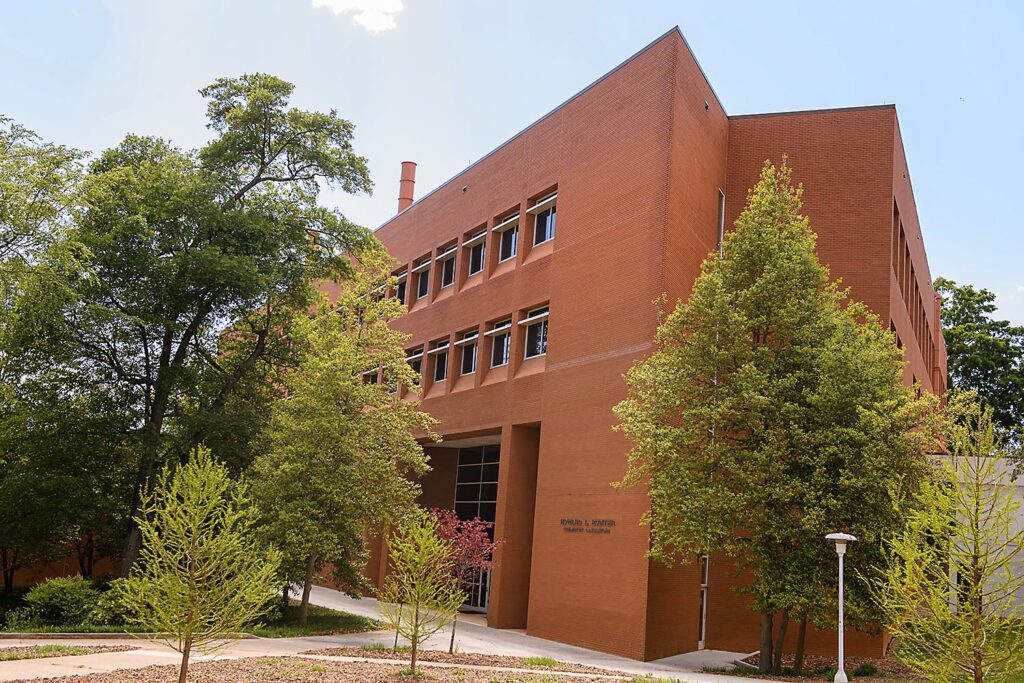Where to find us
- Dr Garcia’s office is located in the third floor of Hunter Laboratories (# 363).
- The laboratory occupies 1000 sq. ft. and is distributed in two laboratories (#201 and #236).
Mailing address: Dr. Carlos D. Garcia, 211 S. Palmetto Blvd, Hunter Rm. 235, Clemson, SC 29634, (864) 656-3128
We are getting ready for AMIC (11/2025)
Instruments in our lab
Metrohm 892 Professional Rancimat
The 892 Professional Rancimat, in together with StabNet software, is an analytical system for easy and reliable determination of the oxidation stability of natural oils and fats using the long-established Rancimat method.
GC-MS (Shimadzu QP2010 Plus)
The GCMS-QP2010SE is a standard gas chromatograph mass spectrometer.
Nano eNabler™ Molecular Printing System
The Nano eNabler™ system is a highly flexible molecular printer that can dispense minute volumes of liquid at defined positions to create patterns of spots or lines with high spatial accuracy. The system is based on BioForce’s proprietary FEMTO (Fluidics Enhanced Molecular Transfer Operation) process. This technology enables the deposition of the 1-30 um sample droplets quickly, precisely and with reduced clogging.
Metrohm VIONIC potentiostat
This is our newest potentiostat/galvanostat and allows performing a wide range of techniques including Electrochemical Impedance Spectroscopy (EIS). You can read this page for more information related to this instrument. We also have two other potentiostats (CHI 660 and BAS) in the lab available for the development of biosensors.
Lindberg/Blue M™ Split-Hinge Tube Furnace w/temperature and gas control
This furnace is currently hooked to a 5% hydrogen line and supports the preparation and characterization of next-gen carbon materials. We have used this instrument to develop a variety of substrates based on pyrolyzed cellulose.
IS400 Rotary Engraver (Gravograph) and CO2 Laser Engraver (EpilogMini)
These computer-controlled engravers are typically used to cut small parts and substrates fro our research projects. The laser engraver is a key instrument for the development of plastic and paper-based microfluidic devices.
Central facilities
Advanced Computing Facilities
The Palmetto Cluster is Clemson University’s primary high-performance computing (HPC) resource. It is heavily utilized by researchers, students, faculty, and staff from a very broad range of disciplines. External users from other universities, government agencies, and from Clemson’s private-sector partners also play significant roles in supporting and using this rapidly growing resource.
Clemson Electron Microscopy Facility
The EM Lab has several state-of-art high resolution transmission electron microscopes (TEM), scanning electron microscopes (SEM) and a combined Focused Ion Beam (FIB)/SEM microscope. We frequently utilize Energy Dispersive X-ray Spectroscopy (EDS), Electron Backscatter Diffraction (EBSD), Wavelength dispersive spectroscopy (WDS), sample manipulation and surface modification capabilities installed on our electron microscopes.
Clemson Light Imaging Facility
This a multi-user core facility housing an array of advanced light microscopes, cytometry equipment, and a fully functional molecular biology laboratory. Users have access to multiple confocal microscopes, a stereoscope, a laser microdissection system, and a polarized light microscope. Additionally, researchers can use an Olympus laser measuring microscope, a CytoViva widefield hyperspectral imaging system, and a BioRad S3E cell sorter. Our staff is available to offer advanced training, perform professional imaging, and/or provide consultations. We also participate in outreach activities for K-12 groups and the general public via the Clemson STEAM network.
Departmental Facilities
Our lab also has access to a wide variety of shared instrumentation and facilities to complete our projects. This includes electron and optical microscopy, mass spectrometry, LC-MS, Raman spectrometry, NMR, MALDI, EPR, X-Ray Crystallography, etc.


















